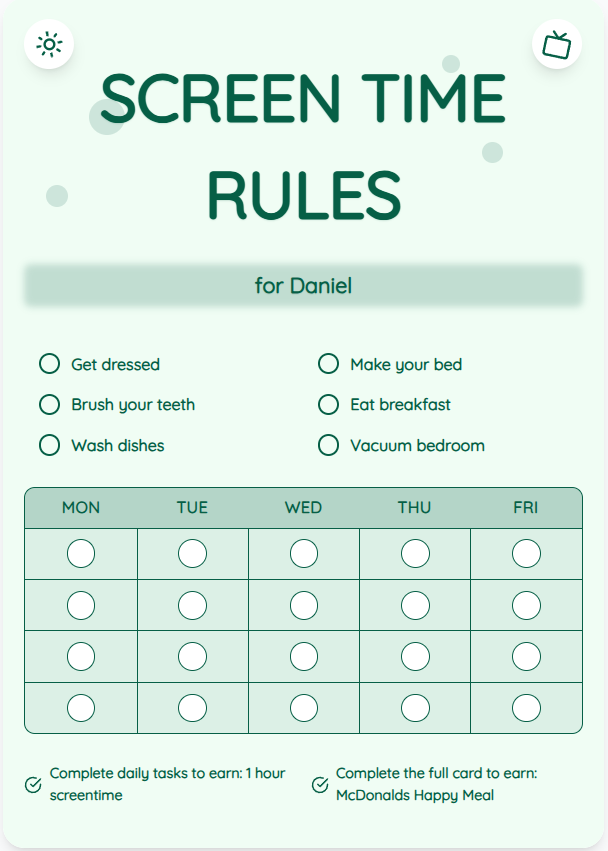Screen Time Management: A Parent's Guide to Setting Limits for Kids
As a parent, navigating the digital world can be challenging. Knowing how much screen time is suitable for your child is crucial for their well-being. Let's explore practical strategies to create a healthy balance in your child's screen time habits.
See What Your Screen Time Chart Will Look Like
Here's an example of a beautiful, customizable screen time rules chart you can create for your family

Understanding Screen Time Guidelines
The American Academy of Pediatrics recommends no more than one hour of screen time per day for children aged 2 to 5, and consistent limits for older children. However, every family is unique, and it's essential to tailor guidelines to suit your child's needs and interests.
Setting Realistic Limits
Create a screen time schedule that works for your family. Consider factors like schoolwork, physical activity, and quality family time. Use screen time charts to visually represent and track your child's daily usage, making it easier for them to understand and follow.
Put These Tips Into Action
Create a custom chart to implement these strategies with your child
Encouraging Alternative Activities
Promote outdoor play, reading, creative hobbies, and social interactions to reduce screen time dependency. Engage in activities together as a family to foster bonding and create memorable experiences outside of screens.
Practical Tips for Success
- Create a designated screen-free zone in your home.
- Use parental control settings to manage and monitor screen time.
- Discuss the importance of balance and self-regulation with your child.
- Lead by example and limit your own screen time.
Frequently Asked Questions
How can I handle resistance from my child when limiting screen time?
Try explaining the reasons behind the limits in a calm and understanding manner. Involve your child in setting the rules to give them a sense of control and responsibility.
Is it okay for my child to have screen time before bed?
Avoid screens at least an hour before bedtime as they can disrupt sleep patterns. Encourage bedtime routines like reading or quiet play instead.
What are the signs of excessive screen time in children?
Watch for signs of irritability, lack of interest in other activities, poor sleep, or declining academic performance. These could indicate excessive screen time.
By finding the right balance and utilizing tools like screen time charts, you can empower your child to develop healthy screen habits. Start implementing these strategies today to promote their overall well-being and family harmony.
Ready to Transform Your Family's Screen Time?
Join thousands of parents who have successfully managed screen time with our customizable charts.
